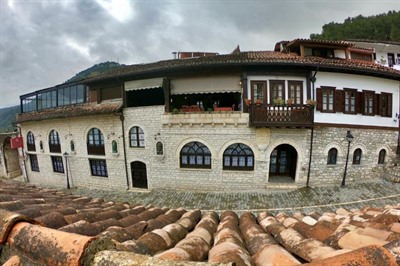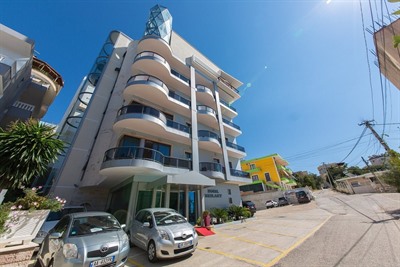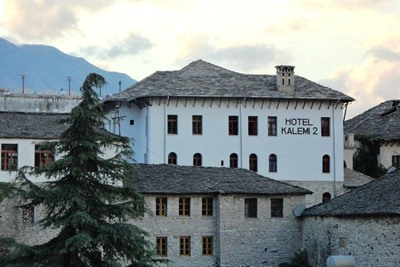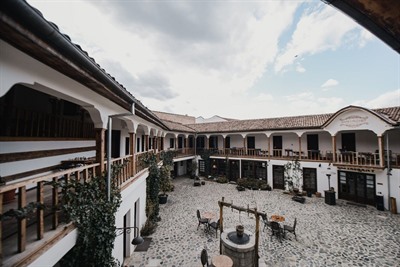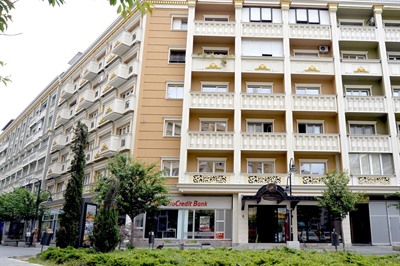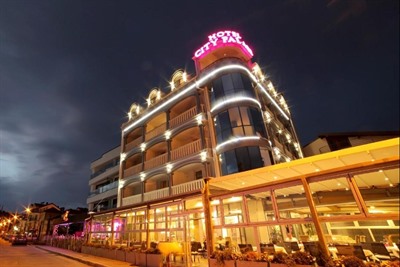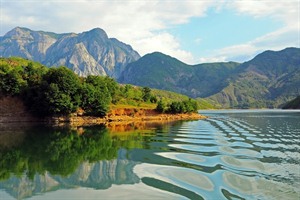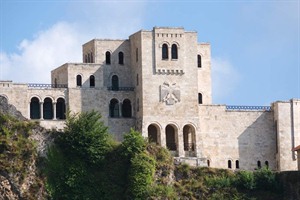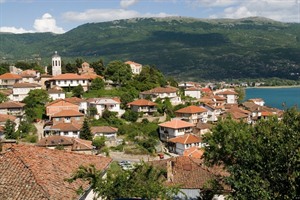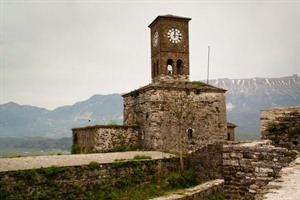- Discover Berat's UNESCO-listed Old Town and Icon Museum
- Explore the ancient ruins of Butrint and Blue Eye Spring
- Journey along the stunning Vjosa River Valley to Korça
- Admire Lake Ohrid’s beauty and the Church of St Jovan
Cultural Landscapes of Albania & North Macedonia
Combine the historical highlights of Albania with the beauty of Lake Ohrid on our Cultural Landscapes of Albania and North Macedonia tailor-made tour. Stay at handpicked boutique-style hotels as you journey from Tirana to Berat’s UNESCO-listed Old Town and on to Albania’s most important archaeological site at Butrint, perfect for history lovers.
Take one of the most scenic routes in Europe along the stunning Vjosa River Valley, where waterfalls crash down sheer mountainsides and eagles swoop over the lush green landscape, before crossing into North Macedonia to visit the 13th century Church of St Jovan, perched dramatically on the cliffs overlooking beautiful Lake Ohrid.
Tour Itinerary

Arrive at Tirana Airport and meet your driver/guide before travelling to Berat, known as the “Town of a Thousand Windows.” Upon arrival, explore the upper town and its UNESCO-listed Kalaja fortress, a sprawling complex with ancient walls, Byzantine churches, and mosques dating back to the 15th century. Visit the Iconographic Museum, housed in a former cathedral, showcasing masterpieces by the renowned painter Onufri. Stroll through Berat’s historical quarters, including Mangalem and Gorica, which sit on opposite sides of the Osum River, connected by a stone bridge. Check in to your hotel for an overnight stay.

Start the day exploring Berat’s lower quarters before travelling to the Archaeological Park of Apollonia, a thriving ancient city founded in the 7th century BC. Discover its fortification walls, Odeon, theatre, and the Church of St Mary, housed in a 14th-century monastery.
Continue to Vlora for brief stops at Independence Square and the Muradie Mosque. Drive along the scenic Albanian Riviera, pausing at Llogara National Park with its dramatic mountain views, and at Porto Palermo Bay to explore Ali Pasha’s castle. End the day in Saranda, a picturesque town set on a horseshoe bay opposite Corfu. (B)
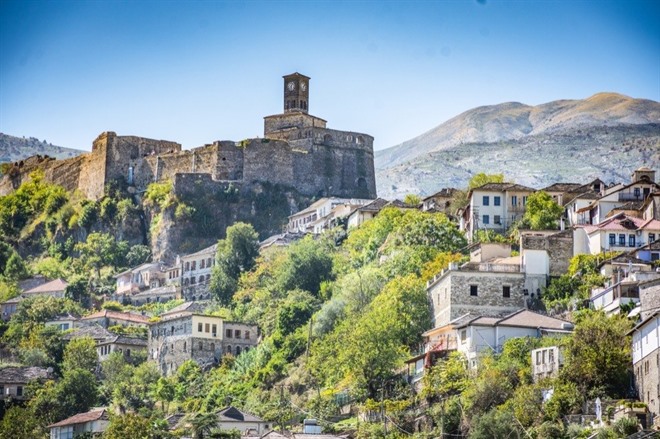
Start the day at Butrint National Park, a UNESCO World Heritage Site and one of Albania’s most significant archaeological treasures. Explore its theatre, agora, and the Sanctuary of Asclepius, set amidst Mediterranean landscapes and wetlands that shelter endangered species.
Continue to the mesmerising Blue Eye Spring, a deep natural pool with vivid blue waters surrounded by lush woods. In the afternoon, visit the Church of Labovë e Kryqit, known for its Byzantine architecture and intricate frescoes. Arrive in Gjirokastra, the “City of Stone,” to tour its cobbled streets, Ottoman-style houses, and the imposing 13th century castle (B)
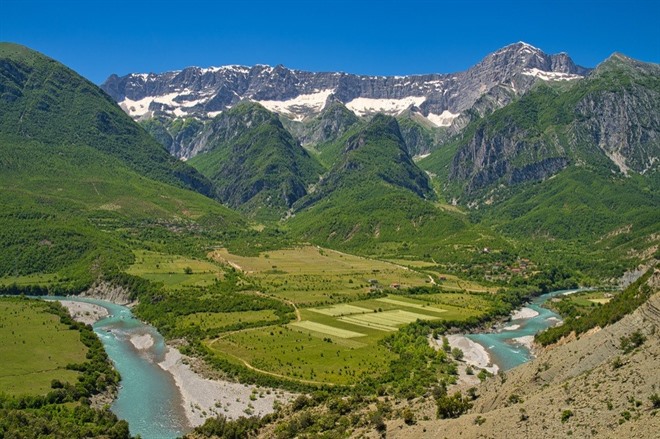
Travel along the stunning Vjosa River Valley, one of Europe’s most scenic routes. Pass dramatic mountains, cascading waterfalls, and lush meadows, while spotting eagles soaring overhead and traditional Albanian life along the winding roads. Stop in Permet to visit the Church of Leusa, known for its remarkable 16th century iconography and ornate iconostasis, untouched by WWII.
Continue to Korça, a cultural hub with a rich heritage. Upon arrival, explore highlights such as the National Museum of Medieval Arts, home to exquisite icons, and learn about Korça’s role in Albania’s educational and cultural history. (B)
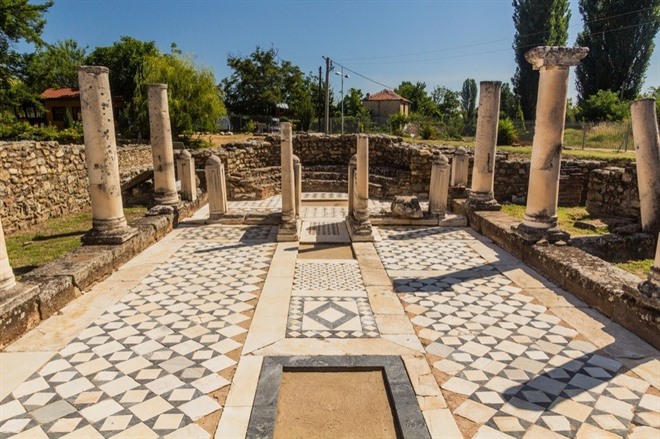
After breakfast, cross into North Macedonia through a quiet border point and drive through the scenic Prespa Lakes region, a transboundary park shared by Greece, Albania, and Macedonia. This biodiversity hotspot is home to over 1,500 plant species, 260 bird species, and unique mammals like brown bears and chamois. Discover Byzantine landmarks, monasteries, and rock paintings dating back to the 10th century. Stop in Bitola, Macedonia’s second-largest city, with a rich history as a diplomatic centre during the Ottoman era. Visit the archaeological site of Heraclea Lyncestis, where Roman ruins, basilicas, and mosaics showcase its ancient grandeur. End the day in Skopje, the capital of North Macedonia. Check in to the hotel for a two nights. (B)
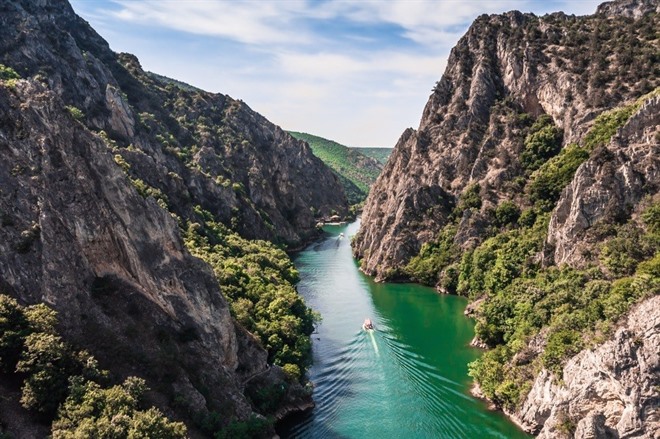
Today, with your guide and driver, enjoy a city tour of Skopje. Admire Macedonia Square with its grand Alexander the Great fountain, and visit the Old Railway Station, where the clock stands frozen at 05:17 from the 1963 earthquake. Stroll through the historic Čaršija, home to Ottoman and Byzantine landmarks like the 15th-century Stone Bridge and Kale Fortress. Explore Debar Maalo, a vibrant dining area, and visit St. Pantelejmon Monastery with its 12th century frescoes. End the day at Matka Canyon, where you can enjoy a peaceful boat trip to Vrelo Cave or a coffee by the water.
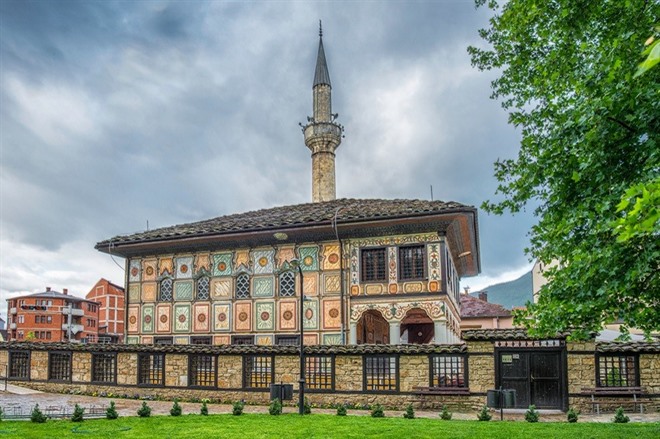
After breakfast, drive towards Ohrid, with stops en route. First, visit the town of Tetovo to see the famous Painted Mosque, known for its vibrant and intricate frescoes. Continue to Mavrovo National Park, a picturesque landscape of mountains and forests, where you’ll explore the stunning Monastery of Jovan Bigorski, perched on a scenic hillside. Arrive in Ohrid, a UNESCO World Heritage town, and enjoy a panoramic tour showcasing its stunning lakeside views and historic landmarks. (B)
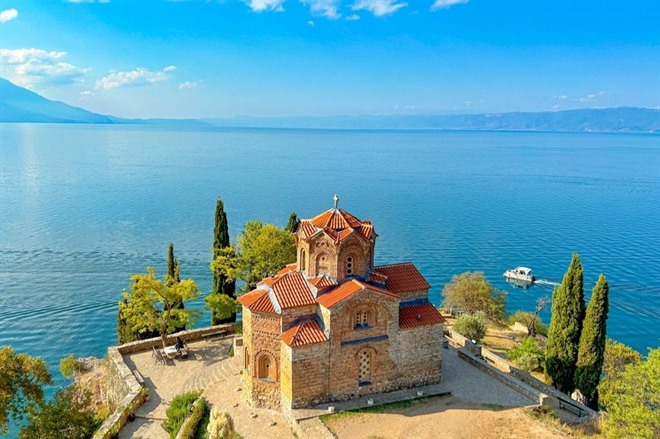
In Ohrid, explore a city known for its stunning lakeside setting and UNESCO-listed historical significance. Founded between the 7th and 19th centuries, Ohrid was once the site of the first Slavic university, run by St. Clement and St. Naum. During its peak, the town boasted 365 churches and monasteries. Visit the local museum showcasing over 800 Byzantine and post-Byzantine icons, considered some of the finest in the world. Enjoy a scenic boat trip on the lake, taking in panoramic views of the town before dining on local dishes, including the famous Ohrid trout. Later, visit the serene St. Naum Monastery, perched on the lake’s southern coast, known for its beautiful frescoes, natural springs, and tranquil atmosphere. (B)
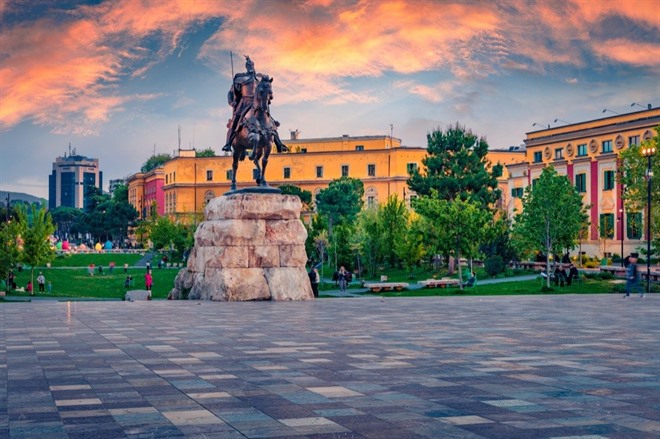
This morning drive to the Albanian capital of Tirana. Spend the rest of the day exploring the capital city of Tirana with the guide. Visit the National Martyrs Cemetery of Albania located on a hill overlooking Tirana. Some 900 partisans who died during World War II are buried in the cemetery, as well as former leader Enver Hoxha, who was subsequently disinterred and given a more humble grave in another public cemetery. Ironically, the massive granite slab that was covering his grave was reused for the dedicatory inscription of the monument for the American and the British forces fallen in Albania. Visit the BunkArt 2 and Et’hem Beg’s Mosque. (B)
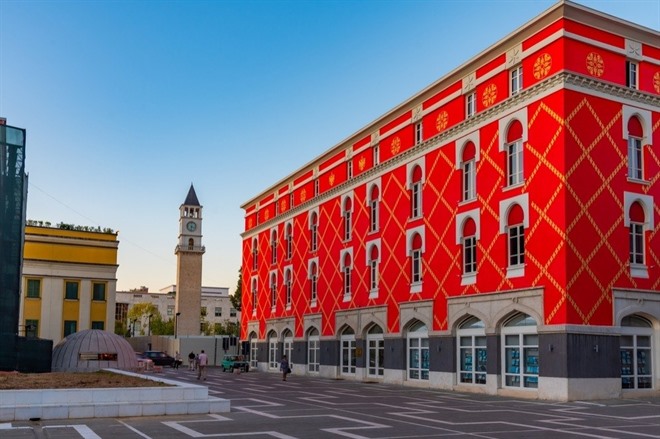
Spend the morning at leisure. If travelling back on the late afternoon flight, enjoy a visit to Kruja to explore the Citadel and the Ethnographic & Skanderbeg museum. Perhaps purchase last minute souvenirs from the restored Ottoman bazaar before transferring to Tirana airport for the flight back to the UK. (B)
Pricing Information
Price Includes
- Return flights from the UK to Tirana
- All airport taxes and baggage
- Accommodation in four-star hotels
- Meals as specified (B = breakfast, L= lunch, D= Dinner)
- All transfers and transportation
- Sightseeing with English-speaking guide
- Entrance fees on sightseeing tours as specified
Price Excludes
- Travel Insurance
- Tips and gratuities
- Additional meals
Price Includes
Price Excludes
Tour Route Map
- Albania, Tirana
- Albania, Berat
- Albania, Saranda
- Albania, Gjirokaster
- North Macedonia, Bitola
- North Macedonia, Ohrid
- Albania, Tirana
- Albania, Theth National Park
- Albania, Shkodra
- Albania, Tirana
Tour Accommodation
